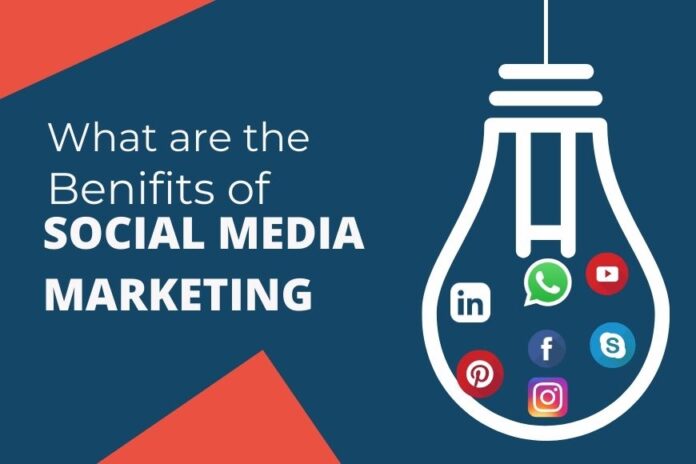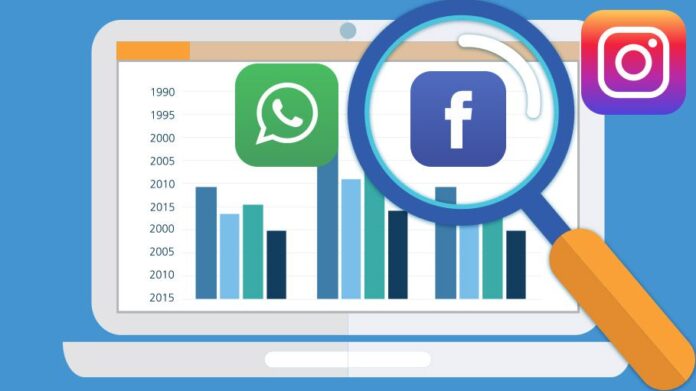Social media marketing can be a powerful tool for businesses, allowing them to reach and engage with their target audiences in a cost-effective, efficient way. It can help to increase brand awareness and loyalty, drive website traffic and leads, and even increase sales. In this article, we will dive into the benefits of social media marketing for businesses and how you can use it to your advantage.
Benefits of Social Media Marketing

Social media marketing has become an essential tool for businesses to reach their target audience and create brand awareness. It offers a variety of benefits, from increased reach to improved customer engagement.
Spread Brand Awareness
Social media can help increase and leverage the brand awareness of your business. It helps you reach new customers and increases the likelihood of customers buying from your company rather than the competition.
One way to do so is by posting content that will resonate with your audience. This could be done through publishing helpful blog articles, creating videos, engaging in conversations with other users, and more. Additionally, by utilizing tools such as post scheduling and analytics reports, you can have a better understanding of how well each post is performing on different social networks.
Generate Leads and Sales
SMM platforms provide the perfect medium for companies to connect with potential customers who are interested in their products or services. Companies can interact with these customers by sharing engaging posts, comments, and messages that can lead to visits to their websites, sales inquiries, and even purchases.
By using social media marketing strategies effectively, businesses can reach a wide range of potential customers through one convenient platform. They can share content that is tailored specifically for their target market and track engagement online in real time. This helps them learn what resonates with their audience so they can tailor future content accordingly. Social media also makes it easier for companies to illustrate their personality and build strong connections with customers.
Improve Customer Service
Customers use social media to get in touch with brands, ask questions, make complaints and express their opinions. Responding promptly to customers will show them that you care about their needs and expectations. Moreover, by taking the necessary steps to help buyers on social media, you can improve loyalty towards your brand and build strong relationships with your audience.
Taking the time to acknowledge comments on your social media pages will demonstrate that you appreciate them and value their input. Additionally, using feedback from clients can be a great way to identify areas of improvement for your business moving forward.
Increase Website Traffic
Sharing content on social networks allows you to funnel users back to your website, boosting your overall visibility. Links from other websites, such as Twitter and Facebook posts, drive people back to your site. If you post captivating content regularly, it’s possible to maintain a steady flow of visitors if they are directed to the content they find engaging.
Making sure that new and interesting content is readily available is key to keeping users clicking through social media links and coming back for more. Additionally, creating shareable videos or graphics increases the chances of being shared by other sites and further boosts website traffic.
Strategies for Success

With a well-thought-out strategy and creative content, businesses can create an effective presence on social media. In order to maximize the potential of social media, there are a few strategies you can employ.
Creating Engaging Content
Content is at the center of any successful SMM campaign, and it can take many different forms.
-Blog posts
Blog posts are great for delving into detail on topics that are important to your brand or industry. Posts can highlight insights from within the organization or explore findings from research conducted by third parties. Make sure to include visuals like images and videos to help break up the text and keep readers interested.
-Videos/Live streaming
Videos provide an easy way to deliver your message quickly and efficiently. Content can range from interviews with thought leaders to promotional materials for upcoming events or products/services you offer. If you have the resources, live-streaming events can add an interactive element that generates strong engagement from viewers both at the event and online.
-Infographics
For highly visual topics like data or statistics, infographics are great tools for sharing information with readers in a way that is both eye-catching and informational. Quality infographics designed for easy consumption by viewers can be shared multiple times and act as valuable tools for your audience.
Utilizing Influencers
The use of influencers as part of your social media marketing strategy can bring tremendous advantages to your business. Influencers are individuals or companies who have a large and engaged following on social media and can be used as credible and reliable sources to promote your brand.
Influencer partnerships are an effective way to acquire more followers, enhance brand awareness and build trust with customers. With an influencer on board, you can use their networks to reach a much wider audience than if you were utilizing just your own channels. Additionally, having an influencer connected to your brand creates a more genuine connection as customers have greater confidence in the recommendations they see from people they follow and trust.
Leveraging Paid Ads

Paid advertising can be a powerful tool for helping to target the right marketing messages to the right audience. Paid ads can be used to promote content or bring attention to pages, leading customers to your website or a landing page with offers. Paid campaigns available on social media platforms like Facebook, Instagram, and Twitter are easy to set up and track, allowing you to measure ROI through in-depth analytics and insights.
When using pay-per-click (PPC) advertising models such as Google Ads or Bing Ads, research keywords properly so you are targeting the right terms relevant to your business and objective. Utilize A/B testing when creating ad campaigns so you can run different versions of the same ad simultaneously and determine which one converts better with customers. Look into retargeting ads as well as demographic targeting options within each platform as a way of further refining who will see your message promoting your specific product or service.
Analyzing Performance

When analyzing performance on social media, use metrics such as engagement, reach, clicks, and conversions to track progress over time. By monitoring these and other hardware and software metrics through platforms such as Adobe Analytics, you can gain visibility into how successful your campaigns are performing. Additionally, analytics tools can help you measure performance against KPIs such as customers’ Average Order Value (AOV).
Conclusion
Ultimately, engaging with customers via social media not only allows you to increase the reach of your business, but also provides added value to your customers. In doing so, you create an improved customer experience that can lead to loyalty and better relationships. It will also set you apart from your competitors by positioning you as an authority in the industry and garnering positive reactions.









